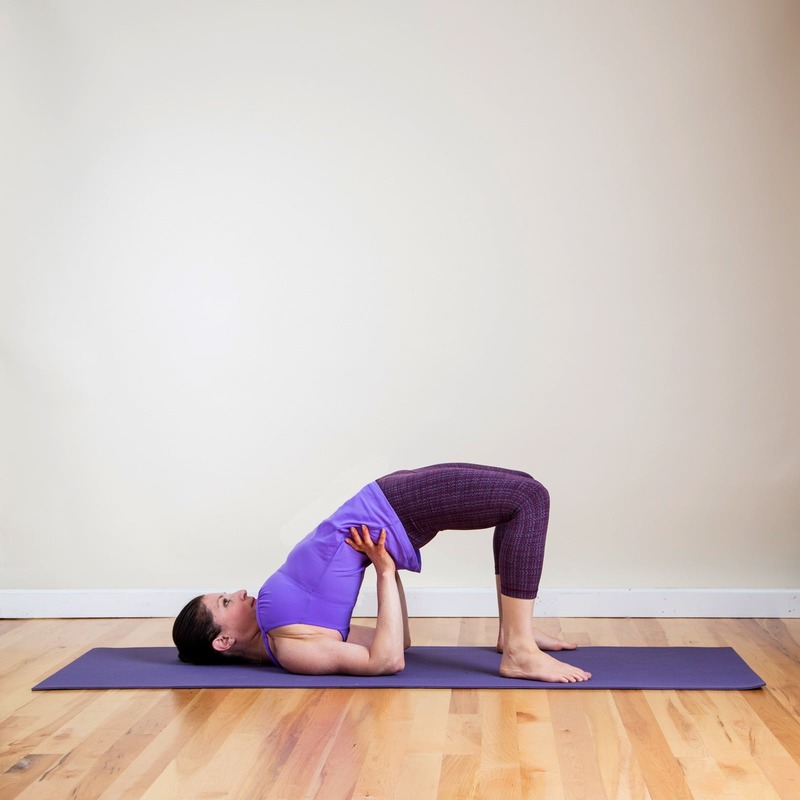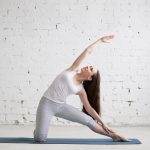Benefits of Yoga Bridge Pose
The Yoga bridge pose, known for its versatility, provides numerous benefits for both body and mind.
Physical Health Improvements
Regular practice of the Yoga Bridge Pose can lead to significant physical health enhancements. Here are a few notable improvements:
- Stretches and Strengthens: It stretches the chest, neck, spine, and hips. It strengthens the legs, glutes, and back.
- Boosts Circulation: The inverted nature helps increase blood flow, enhancing cardiovascular health.
- Enhances Digestion: By stimulating abdominal organs, it can promote better digestion.
- Respiratory Expansion: Opening up the chest allows for greater lung capacity, aiding those with breathing issues.
Mental and Emotional Relief
The Bridge Pose doesn’t just benefit the body physically—mental and emotional wellness are also impacted:
- Stress Reduction: As a mild inversion, it offers the calming effects associated with such poses, reducing stress.
- Mood Enhancement: can alleviate symptoms of anxiety and mild depression, leading to improved mood.
- Better Sleep: The calming nature of the pose may contribute to better sleep and help combat insomnia.
Therapeutic Applications
Beyond general advantages, Bridge Pose holds specific therapeutic benefits for certain conditions:
- High Blood Pressure: The pose has a calming effect that can benefit those with hypertension.
- Asthma: Expanding the chest can benefit asthmatics by increasing lung capacity.
- Preparation for Further Practice: It serves as a foundation for more challenging backbends and inversions.
Remember, while Bridge Pose is generally safe, individuals should consult with a healthcare provider before beginning any new exercise regimen, especially if they have pre-existing health conditions.
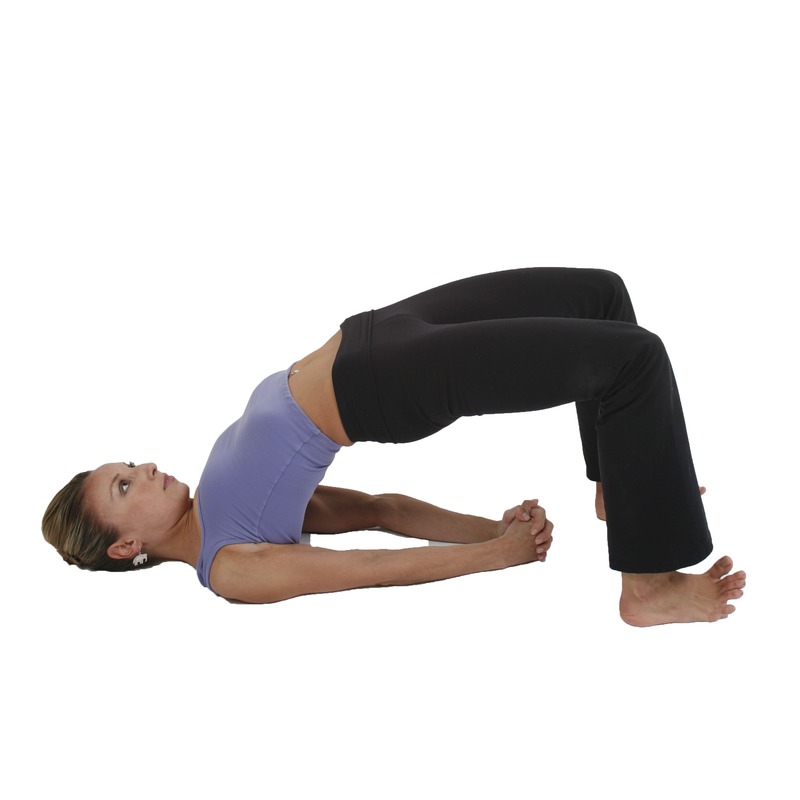
Step-by-Step Instructions
Getting into the Pose
To begin the Bridge Yoga Pose, follow these steps:
- Lie on your back with knees bent and feet flat on the floor, hip-width apart.
- Place your arms flat by your sides with palms facing down.
- Press your feet and arms firmly into the ground to prepare for the lift.
Optimal Alignment and Form
For optimal benefits and safety, maintain this alignment:
- Keep your chin slightly tucked to protect the neck.
- Engage your core muscles to support the spine.
- Press down into your heels to lift your hips upward.
- Ensure your thighs are parallel and avoid splaying your knees outward.
- Lengthen your spine, reaching your tailbone toward your knees.
- If possible, clasp your hands under your back and straighten the arms.
Duration and Release
The Bridge Pose is typically held for several breaths, up to one minute:
- Start with a few breaths, gradually increasing the time with practice.
- To release, unclasp your hands and place them back alongside your body.
- Gently lower your spine to the floor, one vertebra at a time.
- Allow your knees to drop together, providing relief for your lower back.
Variations and Modifications
Practicing the bridge yoga pose can be adapted to suit a wide range of abilities and needs.
For Beginners or Those with Injuries
If you are new to yoga or managing an injury, consider these adjustments:
- Place a yoga block or bolster under your sacrum for added support.
- Keep your hands on the floor with palms down if you can’t clasp them.
- Avoid lifting too high; maintain a comfortable range of motion.
These modifications allow for a gentler version of the pose while still reaping its benefits.
Challenges for Advanced Practitioners
For those with more experience, you can deepen the bridge yoga pose:
- Try the one-legged bridge pose to challenge your balance and strength.
- Keep your buttocks relaxed, using thigh muscles to lift your hips.
- Hold the pose longer, up to a minute, focusing on steady breathing.
These advanced options add intensity to the practice, enhancing strength and focus.
Using Props for Support
Props can enhance the bridge yoga pose’s efficacy and comfort, especially for relaxation or therapeutic focus:
- A yoga block placed under the back enhances support for restorative practice.
- A yoga strap around the thighs helps maintain alignment.
- Cushions can be used for extra comfort or to elevate the head slightly.
From gentle restorative variations to challenging enhancements, bridge pose can be modified to suit your body’s current needs while helping you progress in your practice.
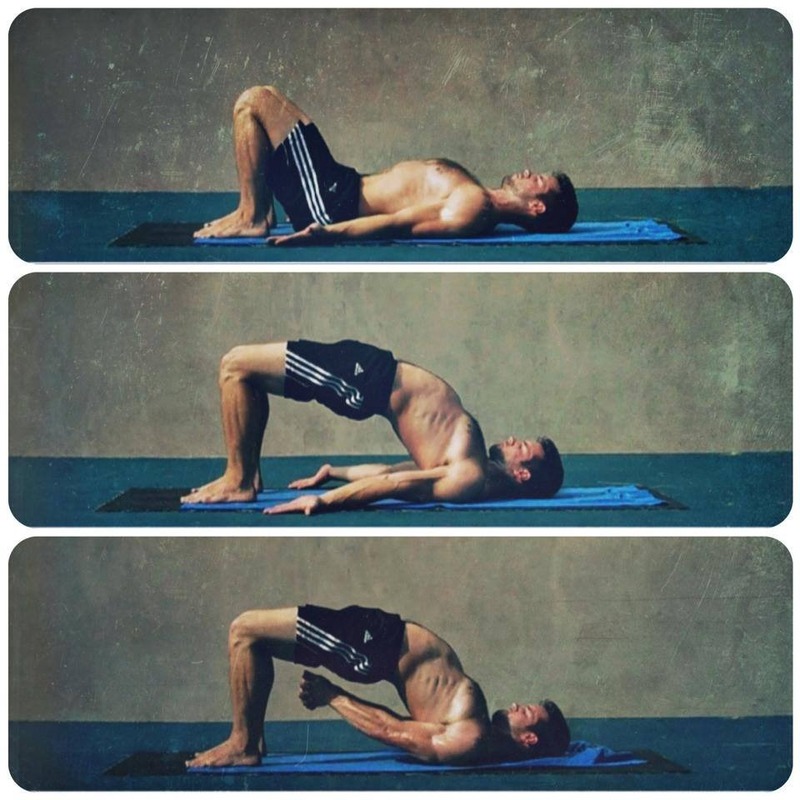
Contraindications and Safety Tips
While the bridge yoga pose offers extensive benefits, it’s not suitable for everyone. Knowing when to avoid this asana and how to practice safely is crucial for your wellness journey.
When to Avoid Bridge Pose
Certain health conditions and physical injuries make bridge pose inadvisable. Here are instances when you should refrain from performing it:
- Neck Injuries: Due to the position of the neck, any existing injuries can worsen.
- Shoulder Issues: The pose requires shoulder stability, and existing shoulder problems could be aggravated.
- Recent or Severe Back Pain: If your back pain is acute or severe, the pose might cause more harm than good.
- Pregnancy: During the later stages of pregnancy, laying on the back is generally discouraged.
Consult with your healthcare provider or a qualified yoga instructor if you have any of these conditions before attempting the bridge pose.
Precautions for Neck and Shoulders
To practice bridge pose without injuring your neck and shoulders, follow these safety precautions:
- Neck Alignment: Keep your neck aligned with your spine; avoid turning your head to the side.
- Shoulder Position: Roll your shoulders back and down, away from your ears, to open your chest.
- Steady Lift: Lift your hips smoothly without jerking to maintain stability and prevent strain.
- Clasped Hands: If clasping your hands under your back, ensure it doesn’t cause shoulder discomfort.
Remember, it’s essential to listen to your body and not push into pain or extreme discomfort. Allow your body to guide you into a safe and beneficial practice of bridge pose.
Integrating Yoga Bridge Pose into Your Yoga Practice
The bridge yoga pose, with its array of benefits, can serve as a core element in your yoga routine. Whether you’re looking to enhance physical strength or seeking mental calmness, integrating bridge pose effectively can enhance your overall practice.
As a Standalone Asana
As a single exercise, bridge pose is powerful enough to impact your wellness positively. It’s great for mornings to kickstart your day or evenings to wind down. Begin with this pose to warm up the spine, open chest and shoulders, and prepare your body for the day’s challenges. Focus on your breathing and move into the pose with gentle awareness, taking note of how your body feels in the moment.
As Preparation for Advanced Backbends
If you’re aiming to conquer more challenging backbends, bridge pose is the perfect starting point. It prepares your body by strengthening the necessary muscles and enhancing flexibility. Engaging in bridge pose before attempting poses like the upward bow or wheel can elevate your backbend practice, offering a smooth transition and reducing the risk of injury. Regular practice can make advanced poses more accessible and improve your overall backbend technique.
Listening to Your Body
Incorporating the bridge yoga pose into your routine calls for mindful attention to your body’s signals. It’s crucial to become attuned to your body’s unique needs and comfort levels while practicing.
Importance of Mindful Practice
Mindful practice is about being fully present and aware of how the pose feels in your body. It requires you to focus on:
- Breath Control: Notice the rhythm of your breath to stay grounded.
- Body Sensations: Pay attention to any sensations, whether comfort or strain.
- Self-awareness: Acknowledge how your body and mind respond to the practice.
By being mindful, you can ensure that the bridge yoga pose benefits your health without causing harm. This approach helps prevent injury and allows you to gain the most from your yoga experience.
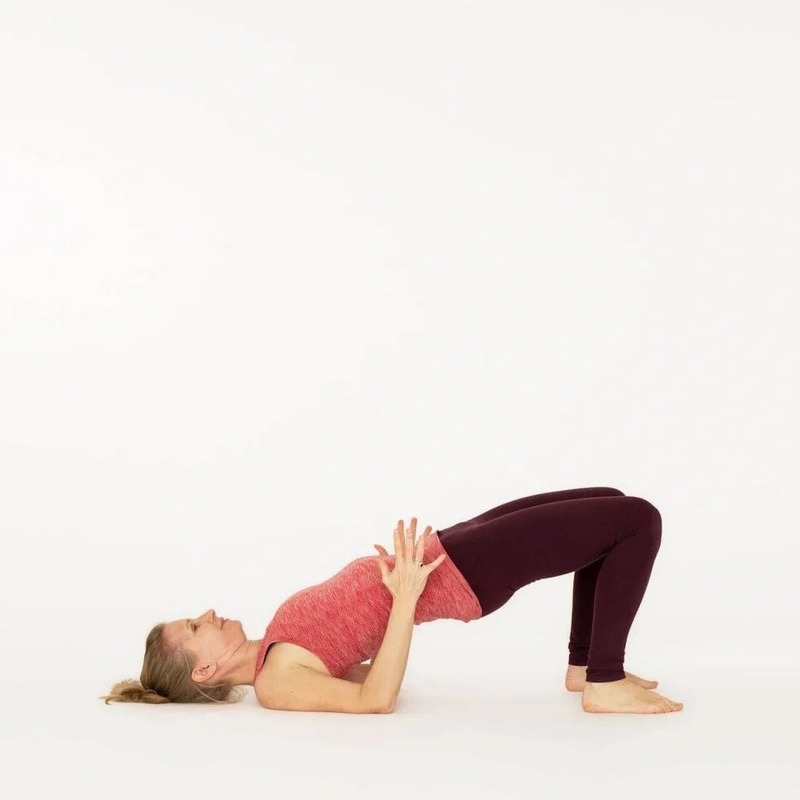
Adjusting the Pose to Your Needs
Every individual’s body is different, and what works for one person might not work for another. Here’s how to adjust the bridge pose:
- Use Props: If you feel strain, props like blocks or straps can offer support.
- Don’t Overdo It: Limit the height of your lift to what feels comfortable.
- Rest If Needed: If you experience discomfort, come out of the pose and rest.
Above all, honor your body’s limits. Modifying the pose ensures it is safe, enjoyable, and tailored to your personal needs. Remember to gradually progress in the pose, and over time, you’ll notice improvements in flexibility, strength, and well-being.
